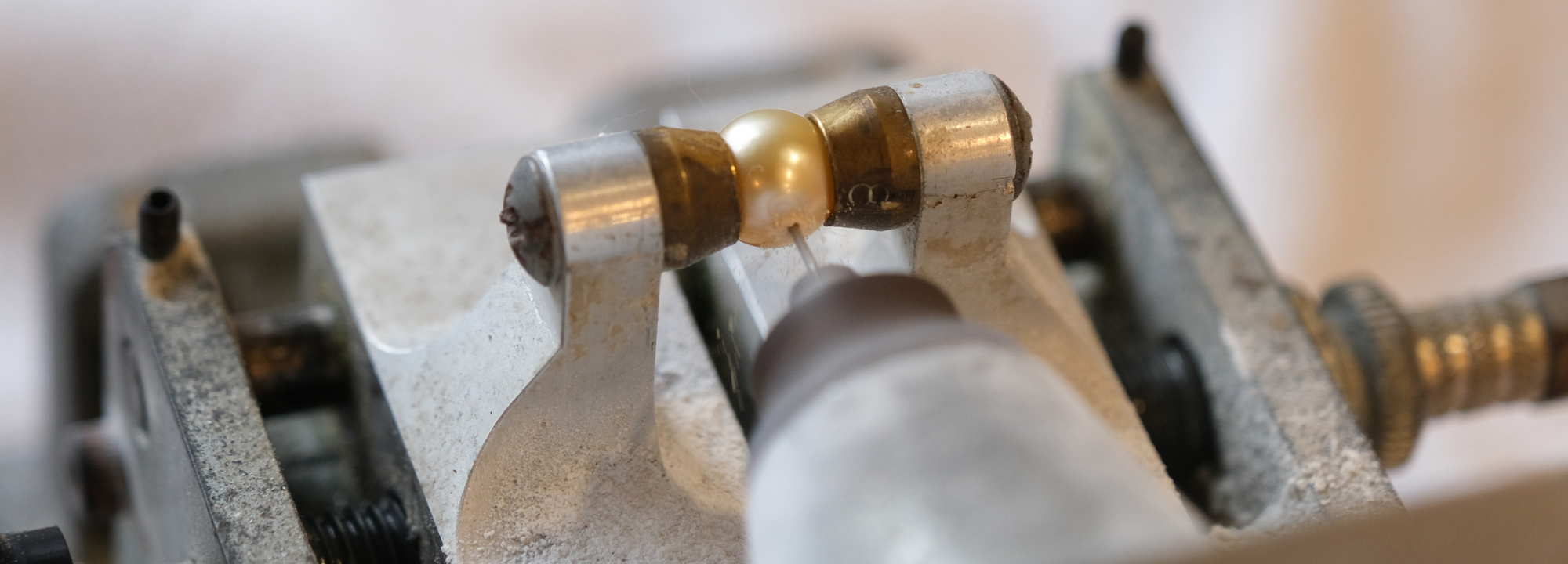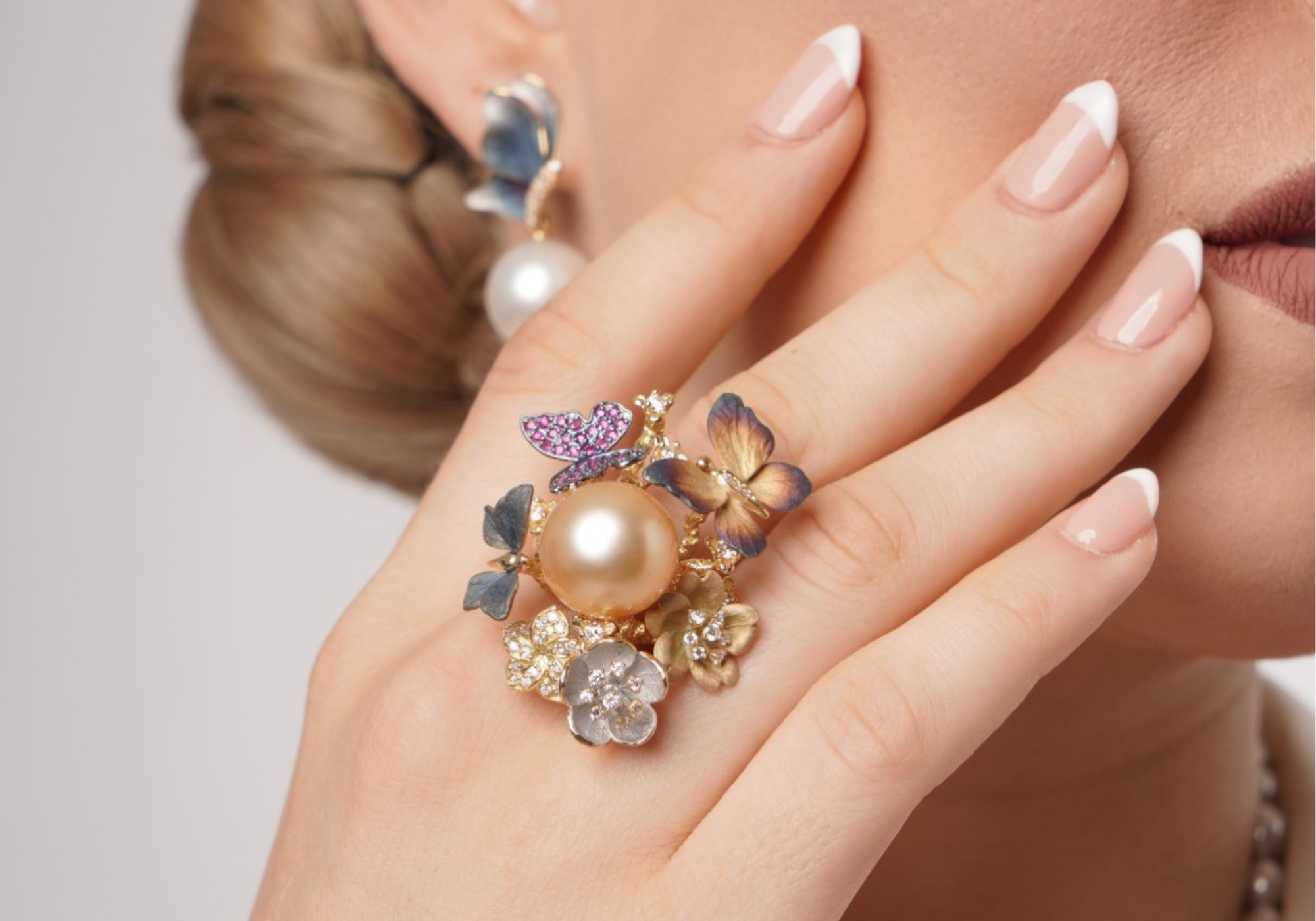Care & Service

Drill
Drilling a pearl requires skill and precision to avoid cracking or damaging the pearl. Typically a small diamond bit is used to drill the hole. The size of the hole depends on the size of the pearl and the type of jewelry it will be used for. Once the hole is drilled, the bead can be strung onto a silk or nylon cord or wire, or attached to a metal setting to be incorporated into a larger piece of jewelry. Proper drilling and threading techniques are crucial to the longevity and beauty of pearl jewelry.
Threading
Stringing beads into a necklace or strand is a process used to create a piece of jewelry from beads. This involves carefully selecting beads of uniform size and quality, drilling small holes in each bead and then stringing them into a necklace or bracelet. Stringing pearls can be a delicate and time-consuming process, but is essential to creating high-quality, long-lasting pearl jewelry. It requires skill and experience, as well as the use of specialized tools and equipment, to ensure that the beads are threaded securely and that the finished piece of jewelry is both beautiful and functional.
STRINGING
Threading is a common service in pearl jewelry services. The beads or pearls are threaded onto a new string. Over time, the original string or cord can become worn or stretched, causing the beads to become loose or even break. Threading ensures that the beads are secure and the necklace or bracelet is safe to wear. The beads are carefully removed from the old cord, cleaned and checked for damage. They are then threaded onto a new string, with each bead tied in a knot so that they do not rub against each other. The new cord is then secured with a clasp or knot, and the necklace or bracelet can be worn again. Rethreading can also be an opportunity to update the design of the jewelry by adding or removing beads or changing the length of the strand.
Sorting service
When evaluating pearl jewelry, the quality of the pearls is assessed based on certain criteria such as shape, size, luster, color and surface quality. Pearl grading helps customers understand the value and quality of a pearl they are purchasing or already own.
The grading process is typically conducted by a trained professional who carefully examines each pearl and assigns it a grade based on its quality. The grading system varies depending on the type of pearl, but generally ranges from A (lowest rating) to AAA (highest rating), or even AAA+ for particularly rare pearls.
Grading pearls can help determine their market value and facilitate their sale or insurance.
cleaning
Cleaning in pearl jewelry service removes dirt, oil and other contaminants from the surface of the pearls. Over time, pearls can lose their luster due to environmental influences and contact with skin oils. Professional cleaning of pearl jewelry is essential to maintain its beauty and extend its lifespan. When cleaning, the pearl jewelry is gently removed from dirt and deposits using mild cleaning agents and soft brushes. Care is taken to ensure that neither the pearls nor their setting are damaged. After cleaning, the pearls are carefully dried and polished to restore their natural shine. It is recommended to have pearl jewelry cleaned by professionals every few years to keep it looking its best.
Pearl Jewelry Appraiser
We offer comprehensive vintage pearl jewelry appraisal services. Our team strives to provide accurate estimates and can issue MIRA certificates upon request.
DISCOVER OUR COLLECTION

